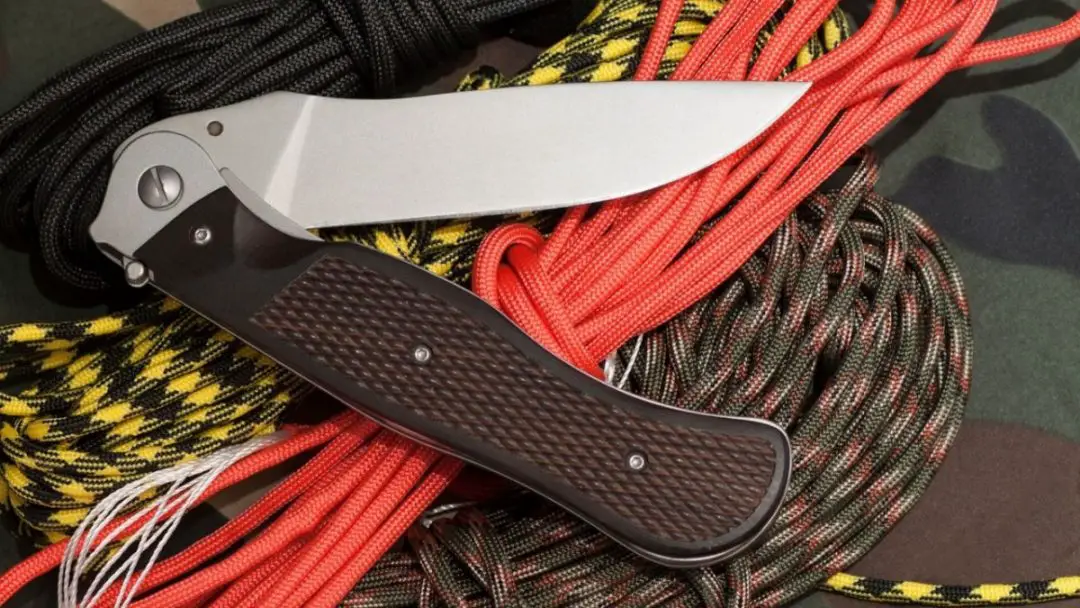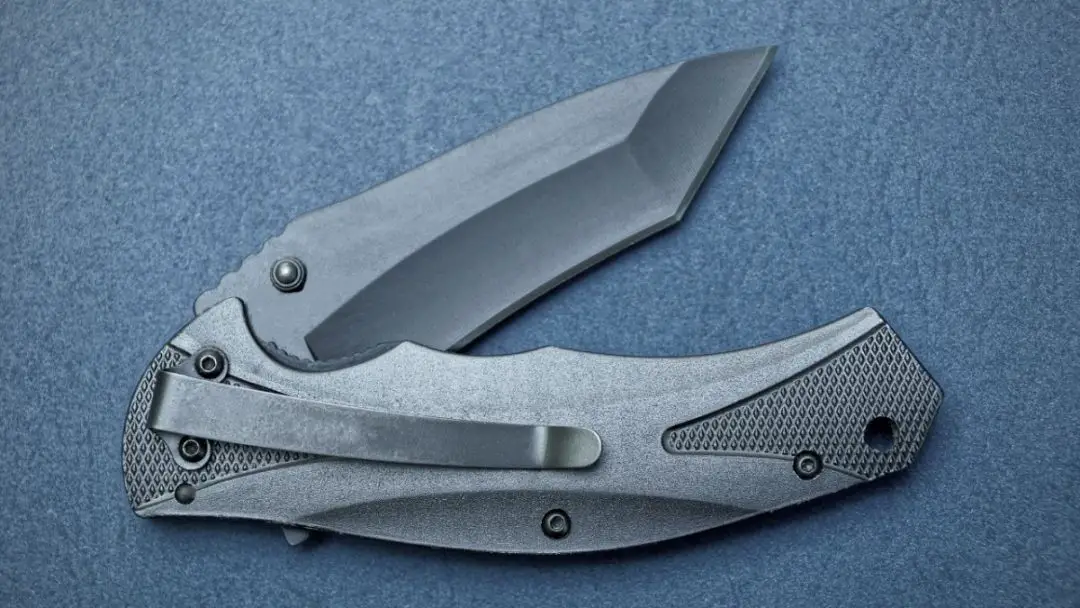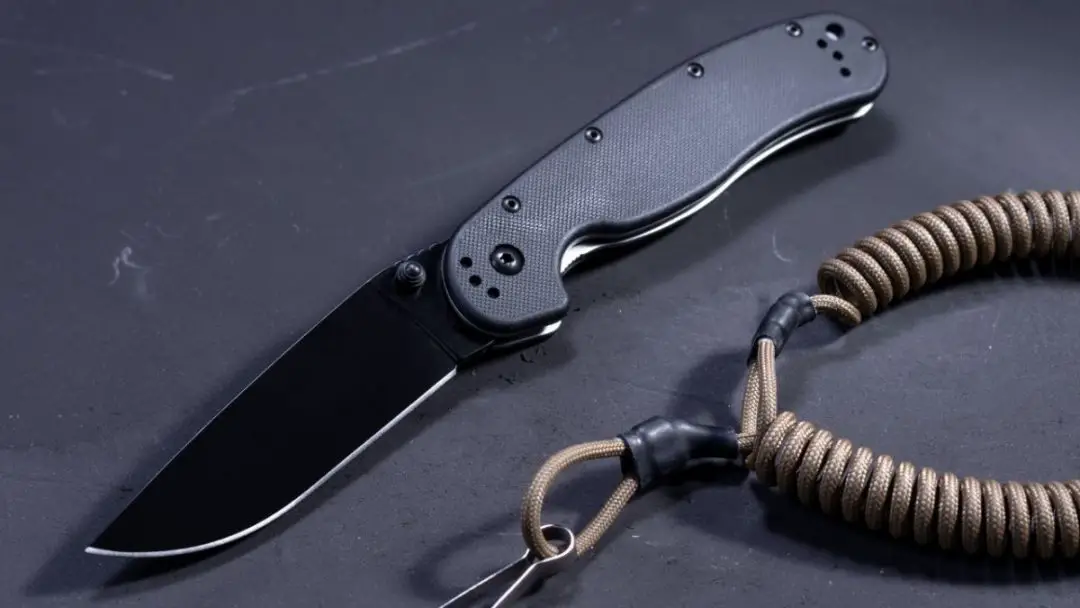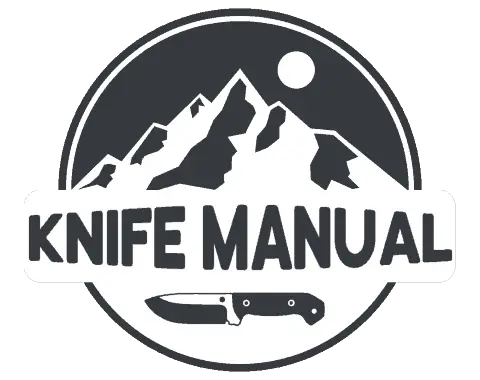
There are a lot of knives out there today that are marketed as being tactical knives. But what exactly is a tactical knife and what features make a knife a tactical knife and not just an average everyday carry knife or something similar?
Tactical knives are a fairly modern variation on the standard fighting knife that has been around for a long time. There are many different variations of tactical knives but some common traits include a strong and often matte coated blade, a textured handle, and many other military-style features.
The exact definition of what qualifies as a true tactical knife and not just a cheap marketing trick is often debated, but there are some clear traits that most tactical knives have in common with each other.
Table of Contents
Essential Elements of a Good Tactical Knife
The term “tactical knife” often refers to a very large and varied group of different knives. There is no official and widely accepted definition of what actually qualifies as a tactical knife.
Generally, tactical knives are knives that have a sort of military-type look to them and are meant for intensive and hard use. This is by no means a definition that is set in stone, however, because there are plenty of knives out there that don’t have any resemblance to a military knife and would break under pressure but they are often still considered tactical knives.
I know, this can get a little bit confusing.
It seems like each knife company, as well as each knife owner and enthusiast, has their own definition of what a tactical knife is. This can make it really hard to lay out the different elements and features of a tactical knife because they are all different depending on who you talk to.
And there is always the theory that the term “tactical knife” is just used as a marketing tool to make a knife seem more appealing, robust, and durable.
Anyways, I’m just going to go off of the most widely accepted and most general idea of what a tactical knife is. There are just so many variations that it might seem a little confusing, but here it goes anyways.
Fixed Blade or Folding
As I briefly mentioned, tactical knives come in a super wide variety of different styles, looks, and designs. This is no different when it comes to whether or not tactical knives are folding knives or fixed blades.
While there is no definition of what a tactical knife is, many people agree that a tactical knife can be either a folding or a fixed blade knife. However, folding tactical knives seem to be the most popular option and the most widely used.
Whether you should get a fixed blade or a folding tactical knife if you are looking into purchasing a knife really comes down to what you intend to use your blade for. While most tactical knives are made to be able to withstand a lot of use and pressure, nothing really beats having a full tang knife if you are doing a hard and intense job.
But if you are just trying to have a cool and yet functional everyday carry knife, the ever-popular folding tactical knife will usually do you just fine. It really depends on what you want and need because tactical knives come in both folding and fixed blade styles you can probably find one in whatever form factor you could ever want.
Size of the Knife
There are a lot of different sizes of tactical knives out there to choose from, but by far the most popular and commonly used tactical knives, from what I’ve experienced, are usually on the smaller end.
One of the great things, and often defining feature of a tactical knife, is the ability for the knife to be rather small but still be strong and durable. This often goes back to the military-style design and construction of many tactical knives. It also is reliant on the quality and of the knife as a whole and how much care and thought was put into its making.
The size of a tactical knife should also reflect the intended use and purpose of the knife. It is useless to have a super small or large knife if it is just the wrong size for the tasks that you are trying to complete. If a tactical knife is not the appropriate size for whatever task you are trying to do, it will be a pain to use and carry and will end up just sitting in a drawer until you eventually get rid of it.
If you are intending to use a tactical knife for everyday carry, smaller is usually the way to go. But if you are doing some sort of intensive tasks like bushcraft, or something similar that puts a lot of pressure on the knife, you should probably go for a slightly larger and therefore heavier duty tactical knife.
Handle Design and Ergonomics
A very important aspect of tactical knives is the handle of the knife. Generally, tactical knives shy away from hard finger grooves and indents so that you can comfortably use the knife in almost any position and grip.
The most ideal tactical knife would be a smooth handled one with still enough texture to allow you to get a good grip and effectively use the knife. This would allow you to use any handgrip you want and it would not have any sharp corners or major hotspots that would become uncomfortable.
The handle of a tactical knife is also often very minimalistic and simple. This not only helps to eliminate finger grooves and hotspots, but it will also make the upkeep of the knife a little simpler. A lot of knives have intricate designs and patterns on their handles that allow dirt and other things to get stuck in them. A simple and clean handle design eliminates most of these problems.
The handle and ergonomics of a tactical knife handle is a very important and crucial thing for a knife maker to get right. It is also part of the buyer’s job to select the tactical knife that will best suit their needs and will perform the best in the situations where they will be using it. As a rule of thumb though, the simpler the handle design, the better.
Handle Material
While we just discussed and went over the main traits of a tactical knife handle design, the material that the handle is made of is also vastly important.
Usually, tactical knives will have a synthetic material for their handles such as Micarta®, G-10, or some other synthetic composite. There are also some pretty great tactical knives that have stainless steel or other metal handles that work just as well as the other synthetic options.
No matter the actual material that the handle is made of, a tactical knife needs a handle that is easy to hold and grip as well as not take in and absorb moisture.
The best way to ensure that the handle of your tactical knife is grippy enough and your hand won’t slip when you are using it is to get a handle that has some sort of texture on it. This will ensure that you can keep a firm and steady grip on your tactical knife even in intense or wet situations where holding a knife might be difficult.
It is also very important to make sure that the handle material won’t absorb any moisture. This will make the material usually crack when it dries out. This is one of the many reasons why metal and synthetic materials work great as handles for most tactical knives.
Blade Design

Moving on from the handle of the tactical knife to the blade, the design of the blade is more of an important factor than you might have realized. It is often a major thing to look at when choosing a tactical knife and is also a distinguishing feature of many tactical knives.
Some of the earlier tactical knives were based on fighting and military knives, but one major difference was that they often had a tanto style blade shape. Tactical knives have branched out and now have almost any blade style and design imaginable.
While the blade of a tactical knife used to be a major distinguishing factor from all other knives, they now come in all different types of blades and it has become less of a noticeable difference.
Regarding what type of blade would be best for your tactical knife, it really depends on what you intend to use your knife for. There are just so many options out there and they all have their pros and cons. Just really think about what you will be using your tactical knife for and choose a blade design that makes sense and is practical.
Blade Material
The steel or metal that the blade of a tactical knife is made of might be one of the most important aspects of the entire knife. Don’t get me wrong, all the other elements and parts of a tactical knife are important to it being functional and being an actual tactical knife, but if the blade material is bad it basically renders the entire knife useless.
A huge feature that most tactical knife blade materials have is just plain durability. That is usually one of the main focuses when it comes to what steel the blade is made of. Even if it adds a little bit more weight or doesn’t look as pretty, the durability and strength of the blade steel are extremely important on a tactical knife.
Most knife makers and manufacturers will have tested and made sure that the material that their blades are made of is high quality and durable, but it is always something to check just in case.
In addition to the actual steel that the blade is made of, a proper and well-done heat treatment is one of the most essential parts of making a good knife blade. As long as the knifemaker or manufacturer is good and knows what they are doing, you shouldn’t have much trouble finding a great and durable tactical knife with a good blade.
Blade Coating and Finish
There is actually a lot that goes into making a really good and durable knife blade. There’s the actual material that it is made of, the heat treatment, the finish and coating, and countless other variables and processes.
While it might sound and be a little cliche, tactical knives often have a matte finish on their blade. While it is far from required to qualify a knife as a tactical knife, it is quite common and adds an extra level of coolness and durability to the blade.
One of the best types of coatings to get on a tactical knife, in my opinion, is some sort of anti-friction coating. This will help your knife blade not catch on any material that you are cutting and it just is super helpful in my experience.
A coating or finish, and definitely a black or gray matte one, is not an absolute must for all tactical knives. It’s just one of those small details that differentiate tactical knives from other pocket and fixed blade knives in many cases. They also have some practical uses such as anti-friction coating.
Intended Use and Purpose
The main intent and use of tactical knives are to be super versatile and handy at any moment. In general, tactical knives don’t have an intended use, they are basically the do-it-all knives.
At one moment they can be cutting an apple, at the next you can open up mail, and the next you might need to use it for self-defense. Tactical knives are not designed to be good at one specific task, and instead, do pretty well at almost any task.
If you want to take a deeper look at what all a tactical knife can do and is capable of, check out my article on this site where I go over what a tactical knife can be used for here.
Basically, tactical knives are mainly meant for utilitarian purposes but are up for the challenge of just about any task. That’s the beauty and what draws many people to tactical knives, they are often small and simple and yet are able to handle almost anything you throw at them.
Method of Carrying

The method of carrying that makes sense for you and your tactical knife often depends on your specific needs and where you are taking your knife. For instance, if you are in public, you might not want your fixed blade tactical knife strapped to your belt in a sheath while if you were on a ranch this would be just fine.
There are many ways to carry a tactical knife. You could use a pocket clip, the sheath on your belt, a scout sheath, a string around your neck, and countless other methods. Again, it really comes down to what is appropriate and what you like and prefer.
Another thing to think about when you are carrying a tactical knife is the need for quick access. Whether you are having to use your tactical knife for self-defense or just need to open up a mail package, it is really helpful if you can get your knife out quickly.
Personally, I like to just have a simple pocket clip on all my knives, whether they are tactical or not, and I just have them clipped to my pocket when I am out and about. This just gives me very easy access to my knife whenever I possibly need it. However, there are many different carrying options and you just have to find what works best for you.
Reputation and Overall Look
While tactical knives are not meant for fighting and violence like some other knives, they are often based on the design and look of military and fighting knives so many people become confused. It is also important to note that tactical knives can be used for self-defense, but as I explained earlier, they are not designed for this and can do so much more.
A distinguishing part and aspect of tactical knives are when all of the parts and pieces that I mentioned earlier come together. There is a certain look and feel that you get when you see a well made and put together tactical knife.
There are just so many different versions and variations of tactical knives that it is impossible to try to define what they all look like. But no matter what, tactical knives always seem to look elegant, practical, and cool.
Conclusion
Tactical knives are a very different and cool type of knife that is really useful and practical. A lot of so-called “tactical knives” that are sold today are just cheap knockoffs to try to profit off of the popularity of more durable and real tactical knives.
Just make sure that you get your tactical knife from a reputable and good manufacturer and you will get so much joy and work out of your knife. Sometimes considered one of the first tactical knives to be ever made, the Kershaw Emerson CQC-7 is a really great tactical knife.
Overall, tactical knives are a really diverse group of knives that come in all sorts of different shapes, designs, and styles. It’s the overall look of a tactical knife when all of the aspects that I talked about earlier come together, that really differentiate tactical knives from other types of knives.

